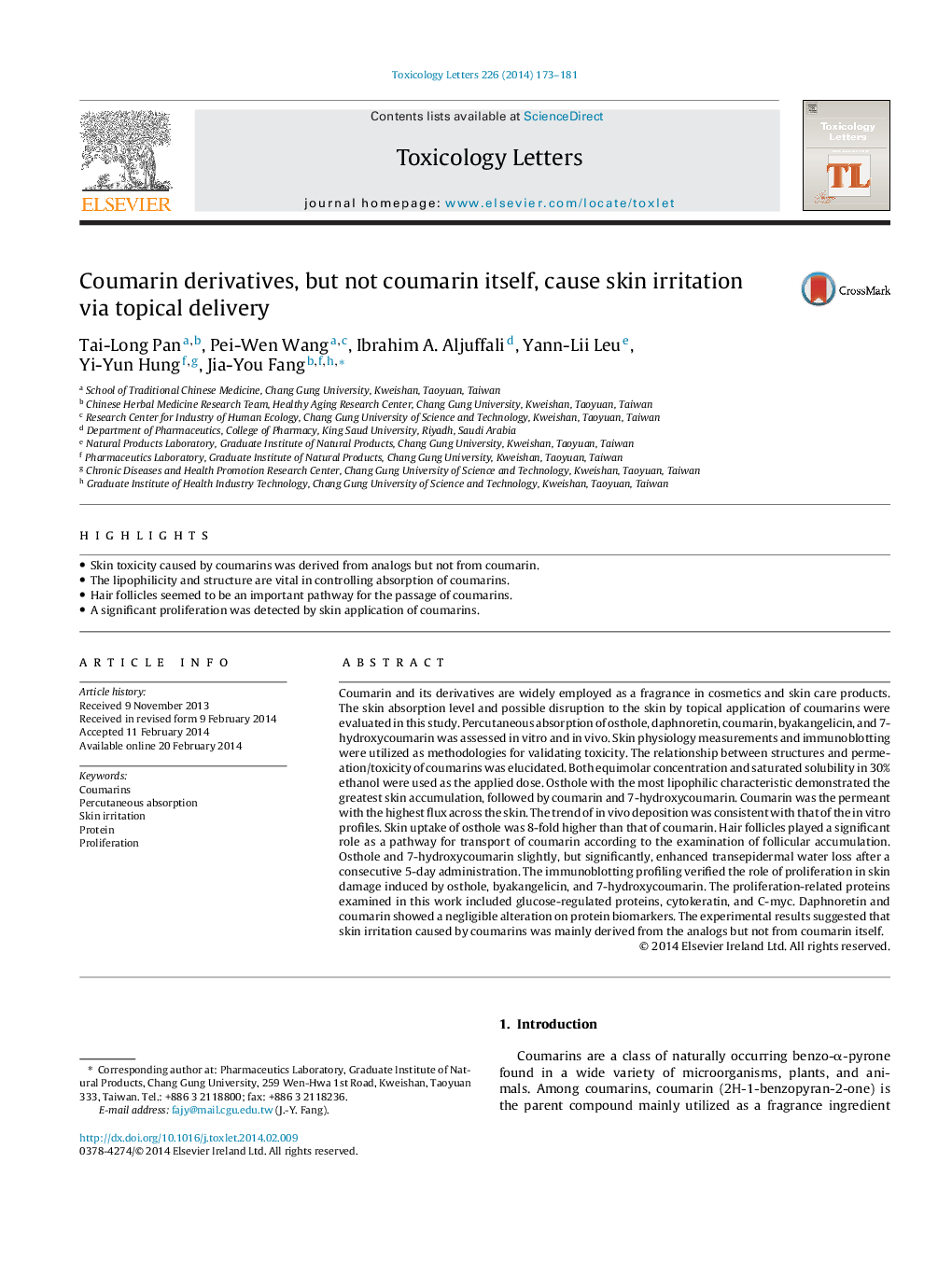| کد مقاله | کد نشریه | سال انتشار | مقاله انگلیسی | نسخه تمام متن |
|---|---|---|---|---|
| 5860350 | 1133180 | 2014 | 9 صفحه PDF | دانلود رایگان |
- Skin toxicity caused by coumarins was derived from analogs but not from coumarin.
- The lipophilicity and structure are vital in controlling absorption of coumarins.
- Hair follicles seemed to be an important pathway for the passage of coumarins.
- A significant proliferation was detected by skin application of coumarins.
Coumarin and its derivatives are widely employed as a fragrance in cosmetics and skin care products. The skin absorption level and possible disruption to the skin by topical application of coumarins were evaluated in this study. Percutaneous absorption of osthole, daphnoretin, coumarin, byakangelicin, and 7-hydroxycoumarin was assessed in vitro and in vivo. Skin physiology measurements and immunoblotting were utilized as methodologies for validating toxicity. The relationship between structures and permeation/toxicity of coumarins was elucidated. Both equimolar concentration and saturated solubility in 30% ethanol were used as the applied dose. Osthole with the most lipophilic characteristic demonstrated the greatest skin accumulation, followed by coumarin and 7-hydroxycoumarin. Coumarin was the permeant with the highest flux across the skin. The trend of in vivo deposition was consistent with that of the in vitro profiles. Skin uptake of osthole was 8-fold higher than that of coumarin. Hair follicles played a significant role as a pathway for transport of coumarin according to the examination of follicular accumulation. Osthole and 7-hydroxycoumarin slightly, but significantly, enhanced transepidermal water loss after a consecutive 5-day administration. The immunoblotting profiling verified the role of proliferation in skin damage induced by osthole, byakangelicin, and 7-hydroxycoumarin. The proliferation-related proteins examined in this work included glucose-regulated proteins, cytokeratin, and C-myc. Daphnoretin and coumarin showed a negligible alteration on protein biomarkers. The experimental results suggested that skin irritation caused by coumarins was mainly derived from the analogs but not from coumarin itself.
Journal: Toxicology Letters - Volume 226, Issue 2, 21 April 2014, Pages 173-181
